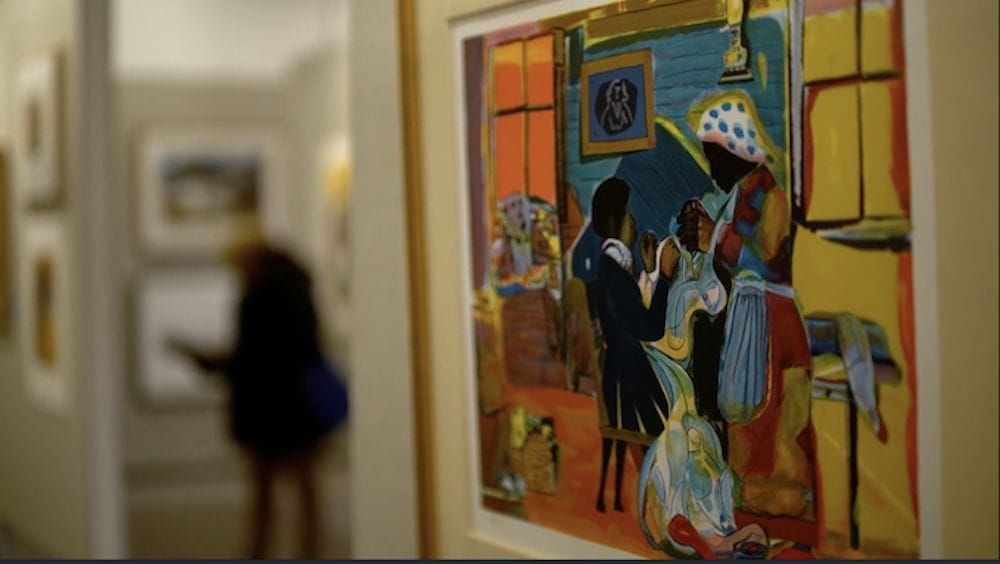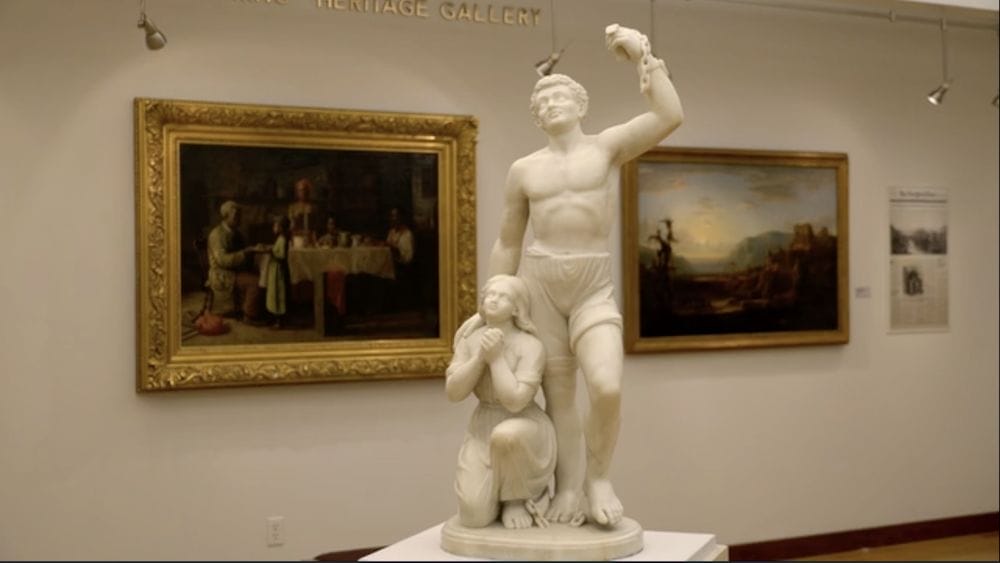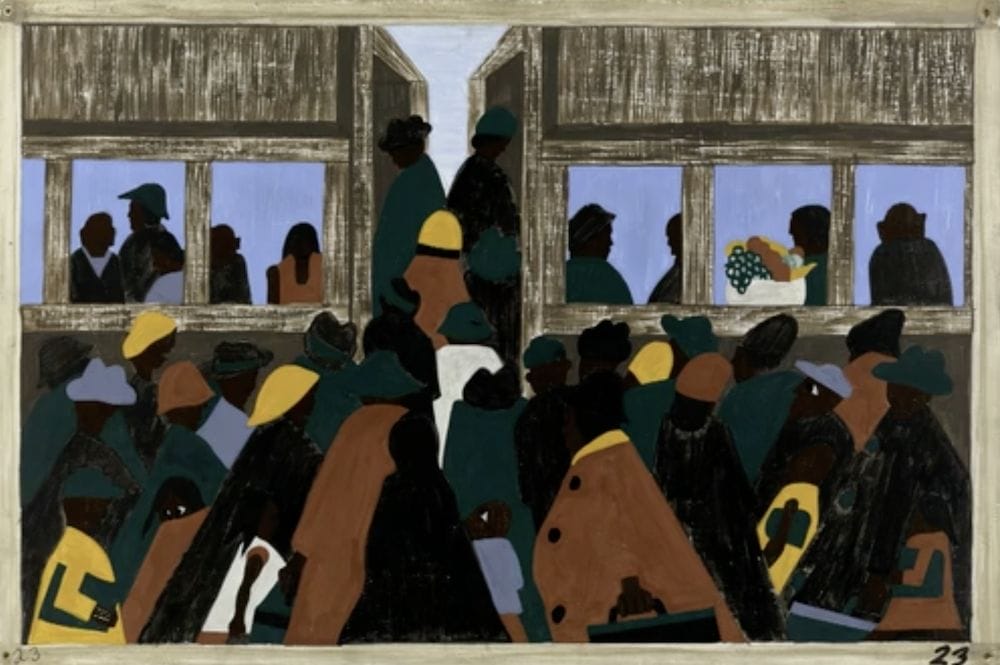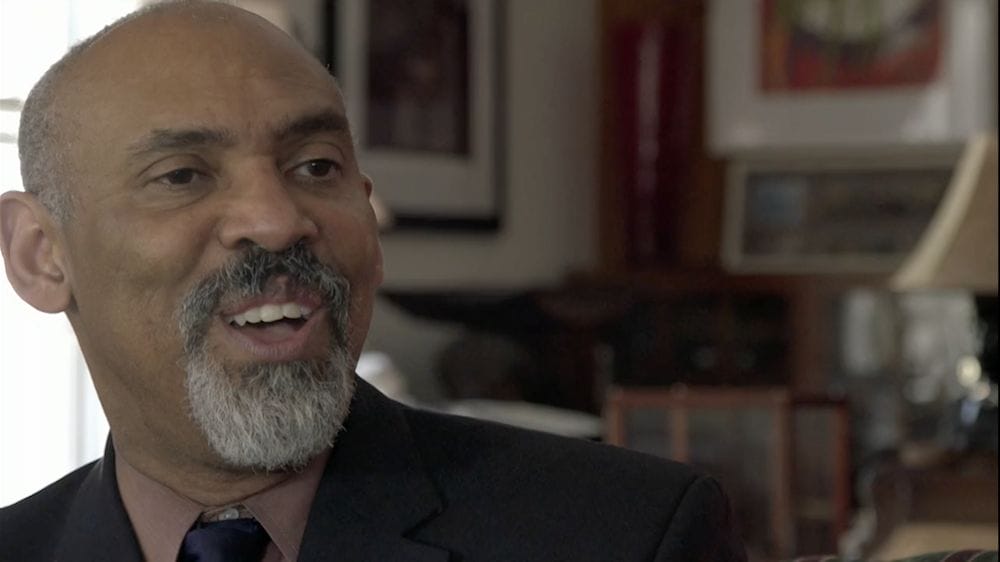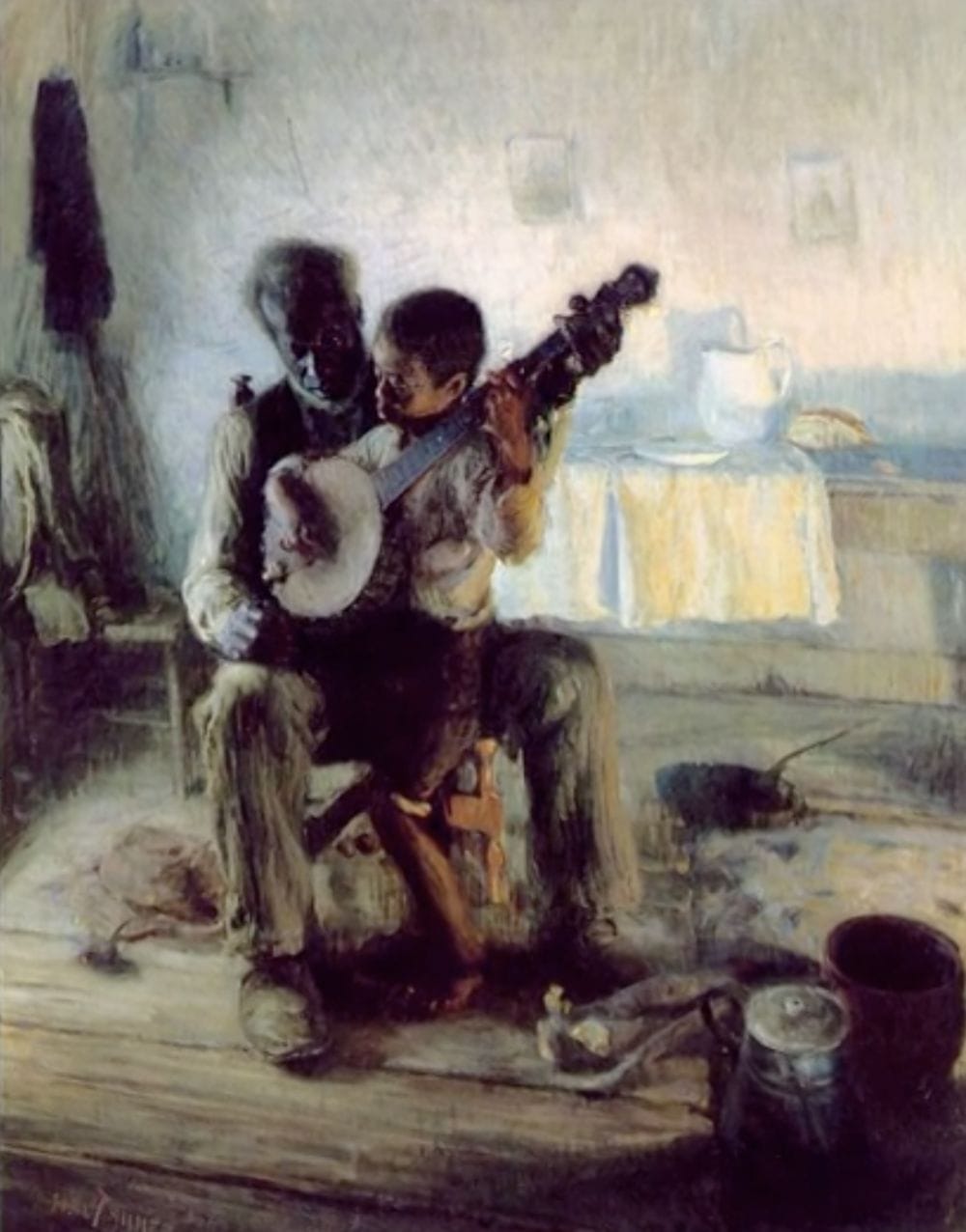Editor’s Note: Find more OVID.tv film reviews here.
The music quiets, the narration stops as the camera focuses on an image of an African-American woman. The reflection of the water and sounds of nature become almost hypnotic as we focus solely on her image for ten seconds. Then, the screen fades to black.
This is Deep River by Whitfield Lovell depicting Southern slaves fleeing to the North. It is one of several artistic works that we get to see and study in BLACK IS THE COLOR by Jacques Goldstein.
BLACK IS THE COLOR tells us the story of African-American artists and their works in the context of the time it was created.
We begin inside a gallery. Panning from wall to wall, we get to see the art up close. It is so close that the individual brushstrokes of some of the paintings are visible. An auction takes place and a piece sells for one hundred and twenty thousand dollars. This short 52 minute documentary then explores the eye-opening history of the past 100 years that has led to this point.
Without dawdle, the film moves through a century of history. Beginning in 1867 with Edmonia Lewis’s sculpture Forever Free we are taken on a journey with images and description of artwork by artists such as Malvin Grey Johnson, Horace Pippin, Jacob Lawrence, Elizabeth Catlett, and Aaron Douglas.
For fellow artists and art enthusiasts, the in-depth explanations of the art techniques are fascinating. We are told how Jacob Lawrence would lay the same color on all his pieces before moving on to the next color, allowing for a sense of continuity. In Aaron Douglas’s works, we are guided to note its strong elements of vibration and sound patterns. Jazz and then hip-hop music accompanies the narrative throughout the film.
OVID.tv asks the question,“What is a Black painting?”
We meet art historian Richard Powell of Duke University who says, African-American artists had a “special charge of fighting against an avalanche of negative imagery . . . They had a particular burden to show a new representation of Black women and men that might speak to humanity, speak to dignity, speak to the beauty that was against the tide of pop culture.” Meanwhile, we also see images of our past. Images of colored only signs in the windows of stores, cartoons or posters of African-Americans with exaggerated features, and clips from old films with African-Americans playing stereotypical roles flash on the screen.
Then, contemporary artists such as Ellen Gallagher and Whitfield Lovell fill the screen. We see them working on pieces in their studio as they explain how they have been influenced by past African-American artists. Lovell shares how his work has been influenced by Horace Pippin. Pippin’s paintings of the end of the war depicted the African-American soldiers as invisible, blending in the background of the piece. Lovell explains that through his work, he hopes to restore visibility to African-American soldiers.
The film displays images and videos of police brutality and the Black Lives Matter Movement from recent years We see images of yellow tape, a flipped over baseball cap, and protestors marching with lightning flashing in the background. For this writer, the art was made more powerful when connected to present societal issues.
Those who don’t enjoy in-depth explorations of artists and art may want to pass on this documentary. Artists, historians, and people who want to continue to educate themselves in the realities of African-American history in the U.S. would likely be intrigued by BLACK IS THE COLOR.
HIGHLY RECOMMENDED
Director: Jacques Goldstein
To view the film, visit OVID.tv page for Black is the Color
Images courtesy of OVID.tv
Nominate this for The Picture This Post BEST OF 2020???
Click Readers' Choice
Vote Securely! Vote Privately! And Make Your Vote Count-- as all voting should be!!
Click here to read more Picture This Post Review of Top Pick Documentaries and watch this video --
Picture This Post Documentary Reviews RoundUp --Our Top Picks

About the Author: Lisa Ryou
Lisa Ryou is from a suburb of Chicago. Having lived near Chicago her whole life, she is no stranger to the creative scene of the city. She is currently studying History, Museum Studies, and Art at the University of Michigan. She has been involved in fine arts her whole life and tries to use her works, both art and writing, as a way to give voice to BIPOC. When she is not at school, you can find her baking, reading, painting, or taking photos.


